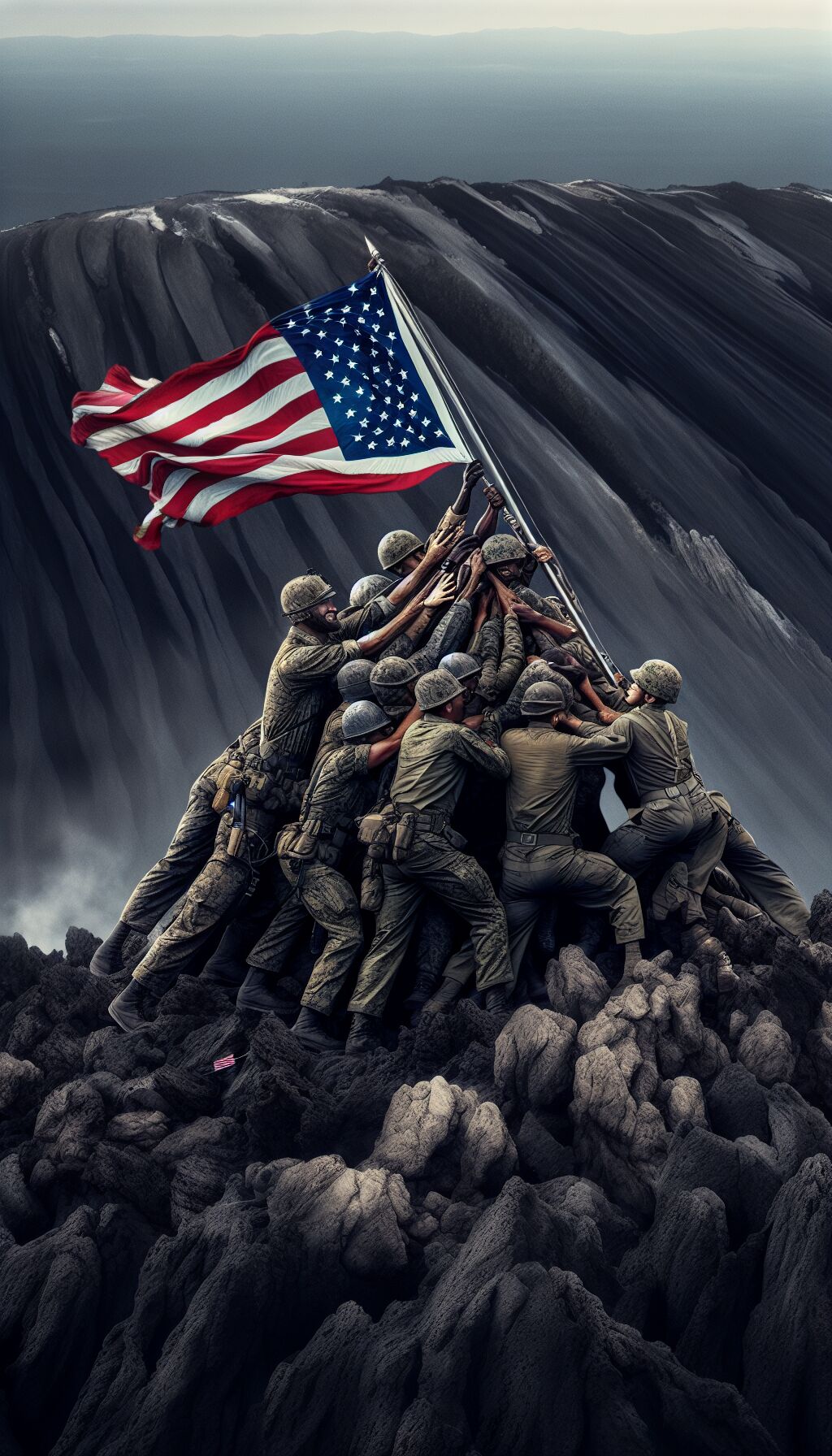The Iconic Flag Raising at Iwo Jima: A Moment in History
On February 23, 1945, a significant moment unfolded on a rugged volcanic island in the Pacific that would later be etched into the annals of history as one of America’s most powerful images. Six U.S. Marines, amid the ferocity of World War II, collaborated to raise an American flag atop Mount Suribachi on Iwo Jima. This event not only symbolized the courage and sacrifice of those who fought bravely but also became an enduring emblem of victory for a nation engaged in a desperate struggle against tyranny.
The Context of Iwo Jima
The battle for Iwo Jima began on February 19, 1945, as part of the United States’ strategic island-hopping campaign aimed at capturing key territories in the Pacific Theater. The island held tactical significance; it provided a potential staging area for attacks on the Japanese mainland. Located just 750 miles from Tokyo, capturing Iwo Jima was imperative for the Allied forces. According to the Department of Defense, the Marines faced relentless resistance, and it took them four arduous days to finally conquer the summit of Mount Suribachi.
“The taking of the 554-foot hill was significant, in that it suppressed the fire from Japanese who were dug in and who had prime vantage of much of the island,” the DOD report stated. Throughout the duration of the battle on Iwo Jima, which extended until March 26, approximately 27,000 Marines and sailors were either injured or lost their lives. Meanwhile, Japanese forces, fiercely defending their territory, suffered approximately 21,000 casualties, many of whom fought from an extensive network of caves and tunnels.
The Unforgettable Photograph
While the battle raged on and the price of victory weighed heavily on both sides, a moment in time was immortalized photographically. On that fateful day, a group of Marines — including Pfc. Ira Hayes, Pfc. Harold Schultz, Sgt. Michael Strank, Pfc. Franklin Sousley, Pfc. Harold Keller, and Cpl. Harlon Block — hoisted the flag, creating a powerful moment that was captured by Associated Press photographer Joe Rosenthal. Little did they know, the photograph would become one of the most reproduced images in the world.
Spreading rapidly through media channels, the image became not just an iconic representation of the bravery and sacrifice of American soldiers but also a potent tool for propaganda. The U.S. government utilized the photograph to rally support for the war effort, featuring it prominently on war bond posters. The fundraising campaign resulted in the collection of an astonishing billion in 1945, showcasing the widespread impact the photo had on American morale and patriotism.
The Legacy of the Flag Raisers
The identities of the six Marines in the photograph have been a matter of debate and research for decades. Recent studies indicate that the men, from left to right, were Pfc. Ira Hayes, Pfc. Harold Schultz, Sgt. Michael Strank, Pfc. Franklin Sousley, Pfc. Harold Keller, and Cpl. Harlon Block. Tragically, three of these brave soldiers — Block, Sousley, and Strank — would later lose their lives during the continued fighting on Iwo Jima. Their deaths not only underscored the carnage of war but also further solidified the image’s potency and significance within American culture.
Despite the loss of life, the spirit embodied in the flag-raising photo continues to resonate today. The image has transcended the confines of the battlefield, appearing on a plethora of memorabilia, including postage stamps, posters, and even monuments. One of the most notable tributes is the Marine Corps War Memorial, located just outside Arlington National Cemetery in Arlington, Virginia. This majestic structure is a towering representation of the photograph and serves as a tribute to all the Marines who have served and sacrificed in defense of the nation.
Reflecting on Sacrifice and Valor
As we reflect on the events of February 23, 1945, it is vital to acknowledge the extraordinary courage of the Marines who fought not only at Iwo Jima but throughout the entirety of World War II. Their bravery in the face of insurmountable odds defined a generation and forged a national identity rooted in resilience and sacrifice.
The Iwo Jima campaign was one of the bloodiest in Marine Corps history, and the flag raising on Mount Suribachi remains a poignant reminder of the costs of freedom and the valor required to secure it. This image, now more than 75 years old, continues to inspire and prompt discussions about honor, sacrifice, and the true meaning of victory.
Conclusion
The photograph of the Marines raising the flag at Iwo Jima stands as a monumental emblem of American history, representing both the triumphs and sacrifices that define the nation. As we commemorate the lessons learned from Iwo Jima and honor those who have donned the uniform, it is imperative to remember their stories, for they encapsulate the enduring spirit of courage and determination. The legacy of the flag raising lives on, inspiring generations and serving as a testament to the indomitable will of those who fight for freedom.
![]()












